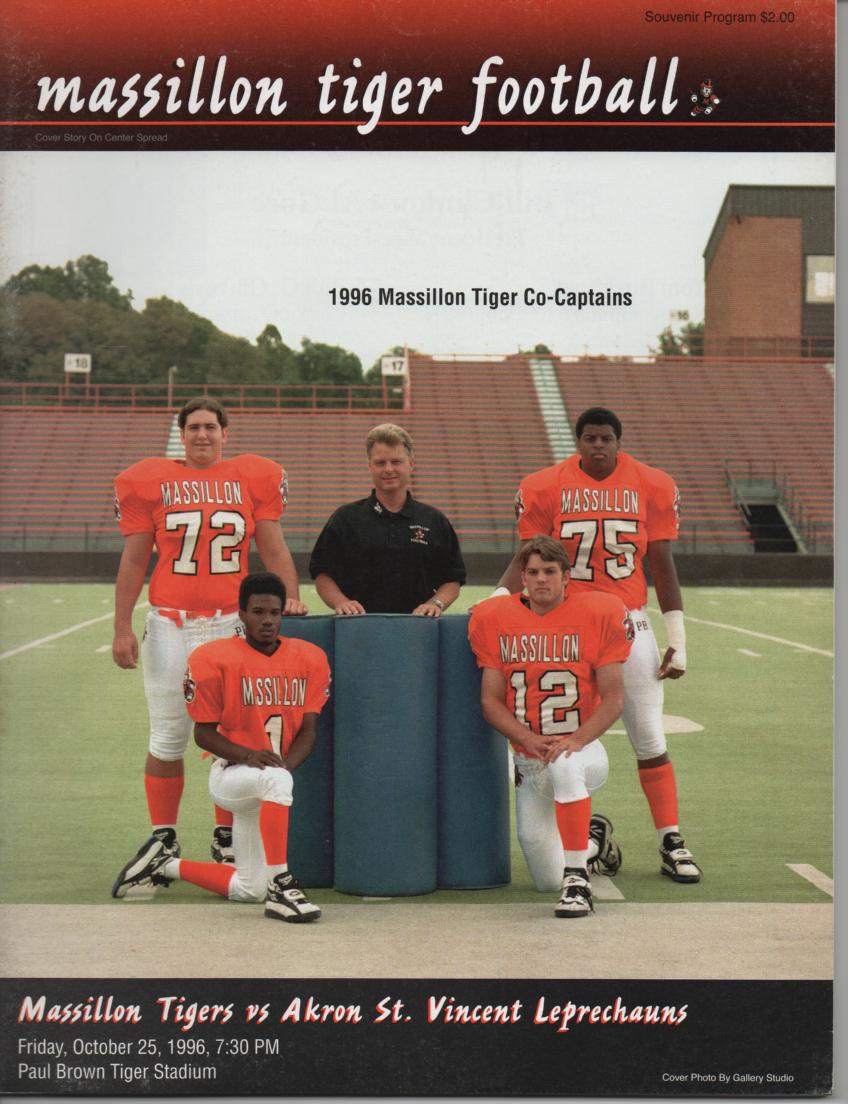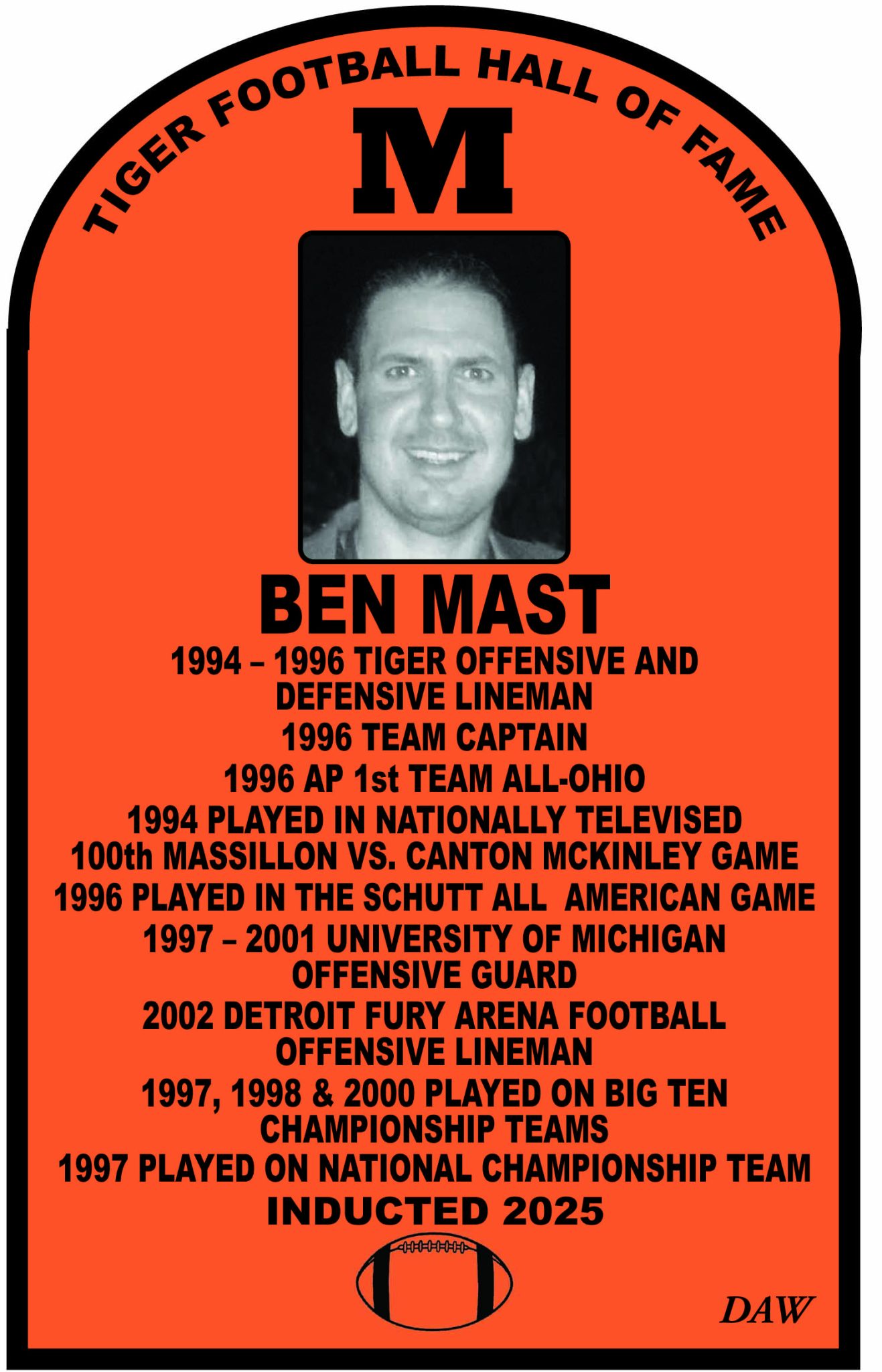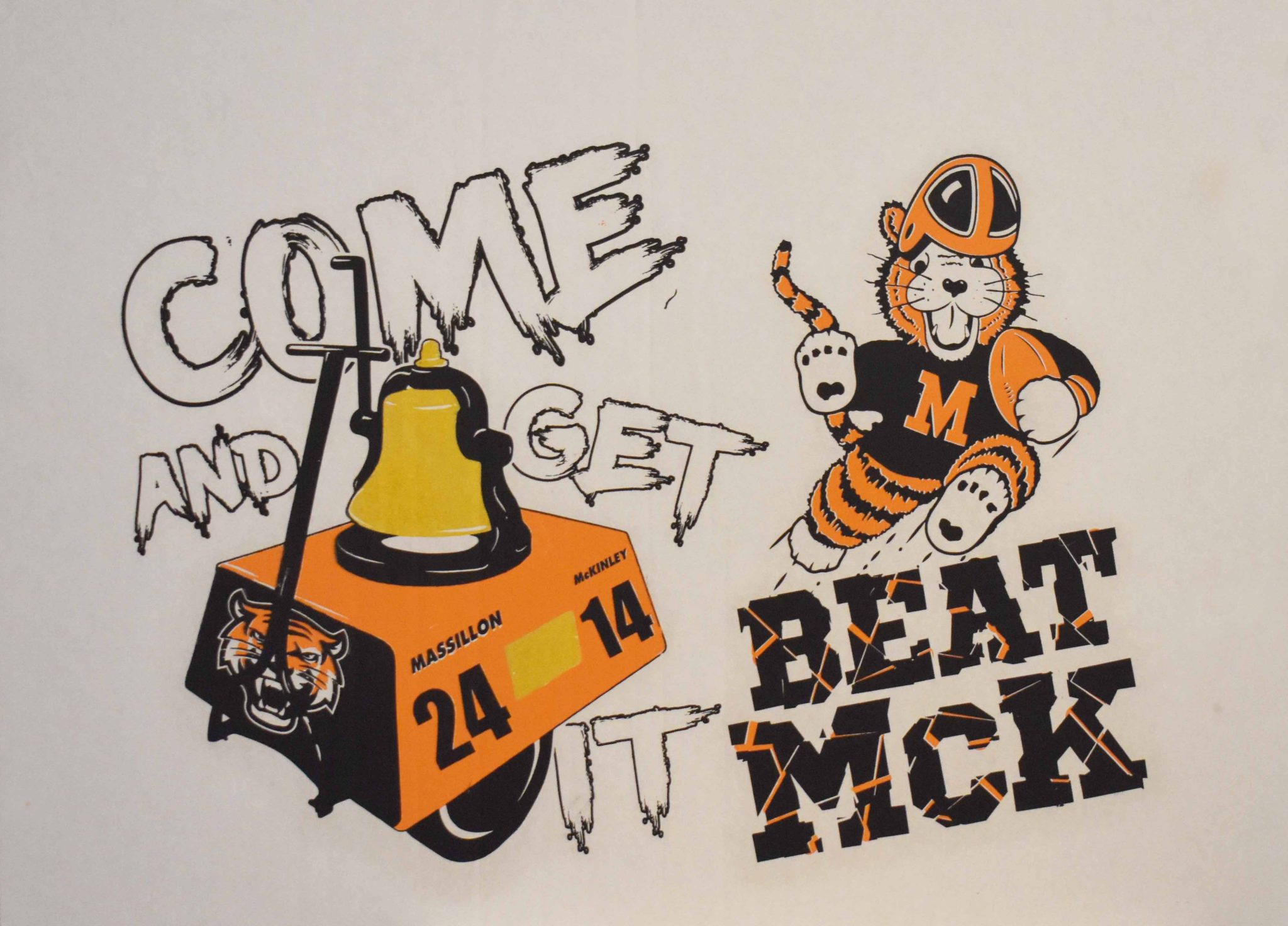Massillon’s History with a Theoretical 12-Team Playoff
“There’s no place like home,” Dorothy exclaimed near the end of the legendary movie, “The Wizard of Oz.” And Massillon Tiger football fans can say the same following the Ohio High School Athletic Association’s (OHSAA) decision to revamp the state football playoffs. With the change, in spite of fewer teams now qualifying, there are better opportunities to host post-season games.

The OHSAA’s playoff system used to determine football state championships was introduced in 1972 at the request of the association coaches. But inspite of the great intentions the OHSAA had at the time, it was not an optimal system at the start and a host of changes have occurred since that time. Initially, just one team qualified from each of four regions across three divisions. In 1980 two more divisions were added and the number of qualifiers per region doubled. In 1985 it became four teams per region, followed in 1994 by the addition of a sixth division. Four per region became eight in 1999 and a seventh division was added in 2013. Whew! That’s a lot of changes.
But it might have remained that way, except that the Covid year of 2020 messed it all up. On account of several canceled games due to the impact of the ailment and the resulting difficulty in selecting qualifiers, the OHSAA opened the door to every team in the state. The following year, with the OHSAA believing that it was beneficial for many schools to enhance the number of participants, the number of regional qualifiers was increased to sixteen. Not discussed was the additional revenue afforded to the OHSAA from the additional 112 games across the seven divisions, considering that the OHSAA also at that time took over control of sales and collection of money from the purchase of playoff game tickets.
Regardless of the OHSAA’s beliefs, the coaches apparently were never in favor of a 16-team region, preferring twelve instead, with the top four qualifiers receiving byes in the first round. It should be noted that a 12-team format was the format going into the 2020 season until it was derailed by Covid. Now finally, the coaches have gotten their way.
Per this author, the right number is probably eight teams per region. However, the method used to select the teams, i.e., the Harbin System, has several flaws and is considered incapable of selecting these eight teams, let alone seeding them properly, as compared to algorithm-based methods that utilize true strength-of-schedule components, not just a simple summation of opponent wins. For, all teams are just not created equal. The author’s study shows that, in order to assure that the best eight teams are included, at least twelve teams from the Harbin System must be selected. Thus, a 12-team format is therefore considered optimal, although it doesn’t solve the seeding problem and corresponding earned rights to home games.
With the recent modification, the top four seeded teams receive a bye in the first round. The remaining teams face off, with 5 vs. 12, 6 vs. 11, 7 vs. 10 and 8 vs. 9. In Round 2, No. 1 faces the winner of 5 vs. 12, No. 2 faces the winner of 6 vs. 11, etc. The next two weeks are then used to determine the regional champion. In Weeks 1-3 the higher-seeded team hosts the game. The Week 4 championship game is then played at a neutral site.
With this format, the ideal seeded positions are Nos. 1 and 2. Not only do these teams receive a bye week, they are also guaranteed the potential of two home games. The next favorable positions are Nos. 3 and 4. These teams receive a bye week plus one guaranteed home game. After that comes Nos. 5-8, with one guaranteed home game.
Now for the fun part. Had the new playoff format been in place since the start of the playoffs in 1972, a span of some 53 years, how would Massillon have faired year-to-year? The chart below presents the raw numbers.

The Tigers were in Division I from the start through 2012. The data shows that they would have qualified for the playoffs 36 times out of 41 attempts, or 88% of the time. Of the five years in which they failed to qualify, twice (1998 and 2004) they had four wins and twice (1974 and 2007) they had six wins, so that’s understandable. Ironically, they would have qualified in every year under a 16-team format.
The outlier came in 1978 when Massillon finished in the 14th position with a record of 9-0-1 and would have failed to qualify. Again, the flaws of the Harbin System are cited. The problem that year was with the opponents, most of which failed to win many games. In fact, outside of Canton McKinley (7-2) and Warren Harding (7-2-1), the remaining teams won just a third of their games, something the Tigers had no control over. Of course, there were only three divisions at that time. In a 7-division format they would most likely have qualified.
About a third of the time they would have been seeded first or second. They would have finished in the top four and received a first-round bye 20 times, or about half. And they would have finished in the top eight and hosted at least one game 30 times, or about three-quarters.
In 2013 the divisions were restructured, with the Tigers assigned to Division II, since the number of teams placed in Division I was lowered. Over the next twelve years Massillon would have qualified in every year. Seven times, or 58%, they would have been seeded first or second. They would have received a first-round bye ten times, or 83%. And they would have hosted at least one game eleven times or 92%. The only year in which they would not have hosted a game was in Coach Nate Moore’s first year, when the team finished in 11th place with a record of 4-6. However, the playoffs would have been interesting that year, given that Massillon defeated eventual regional champion Perry during the regular season.
Thus, if Massillon’s success over the past several years continues, there is a high probably of having a bye in the first round of the playoffs, something that is beneficial for three reasons. The first is that it provides the program a chance to regroup both physically and mentally following an intense rivalry game. Second, they could reach the finals while playing one less game than previously. And third, they could continue to have a high probability of hosting two playoff games. Because, let’s face it; there’s no place like home!
 History
History 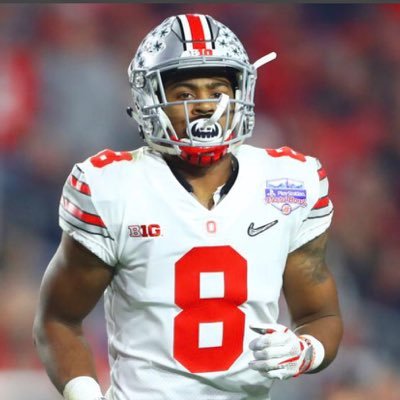
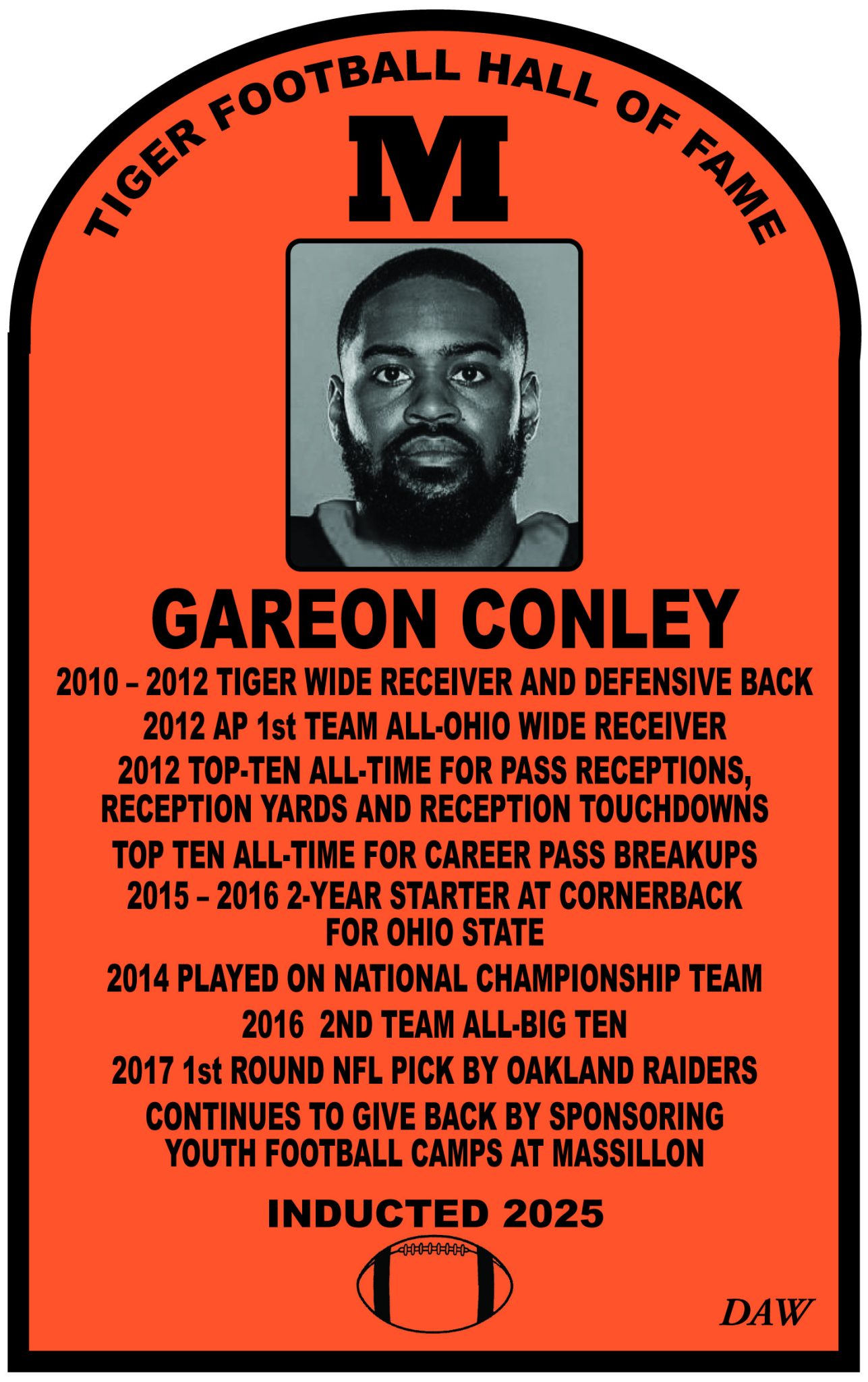


 Antonio James, from the Class of 2006, played on the defensive line for three years under Head Coaches Rick Shepas and Tom Stacy. As a team captain during his senior year the team finished with a record of 13-2, with James recording 43.5 tackle points, 11 tackles-for-loss, 6.5 quarterback sacks, 5 pass breakups and forced 3 fumbles, all good enough to be named 1st Team All-Ohio. In the playoffs the Tigers defeated Canton McKinley in the regional finals and Lakewood St. Edward in the state semifinals, only to lose to Cincinnati St. Xavier in the finals the following week.
Antonio James, from the Class of 2006, played on the defensive line for three years under Head Coaches Rick Shepas and Tom Stacy. As a team captain during his senior year the team finished with a record of 13-2, with James recording 43.5 tackle points, 11 tackles-for-loss, 6.5 quarterback sacks, 5 pass breakups and forced 3 fumbles, all good enough to be named 1st Team All-Ohio. In the playoffs the Tigers defeated Canton McKinley in the regional finals and Lakewood St. Edward in the state semifinals, only to lose to Cincinnati St. Xavier in the finals the following week.



